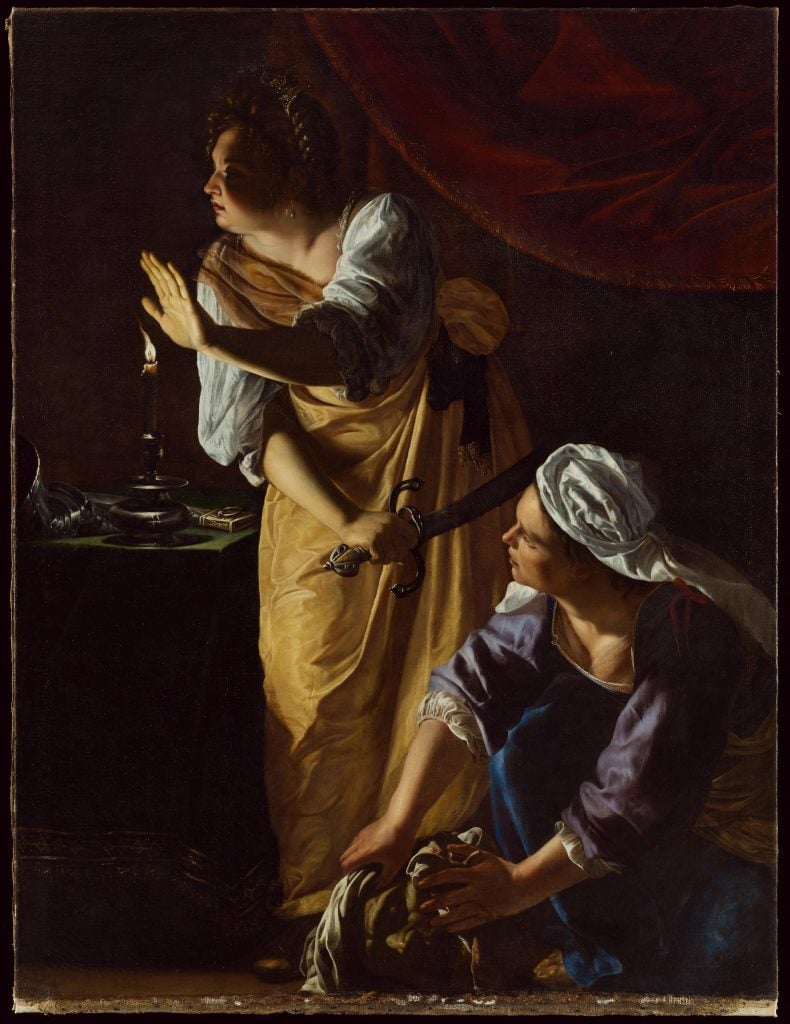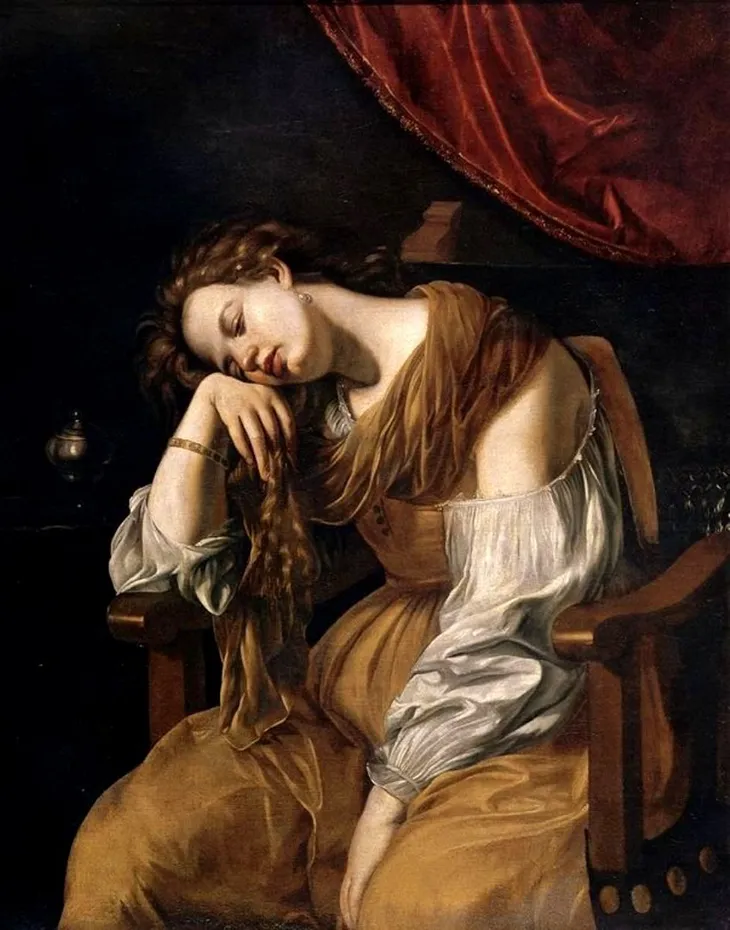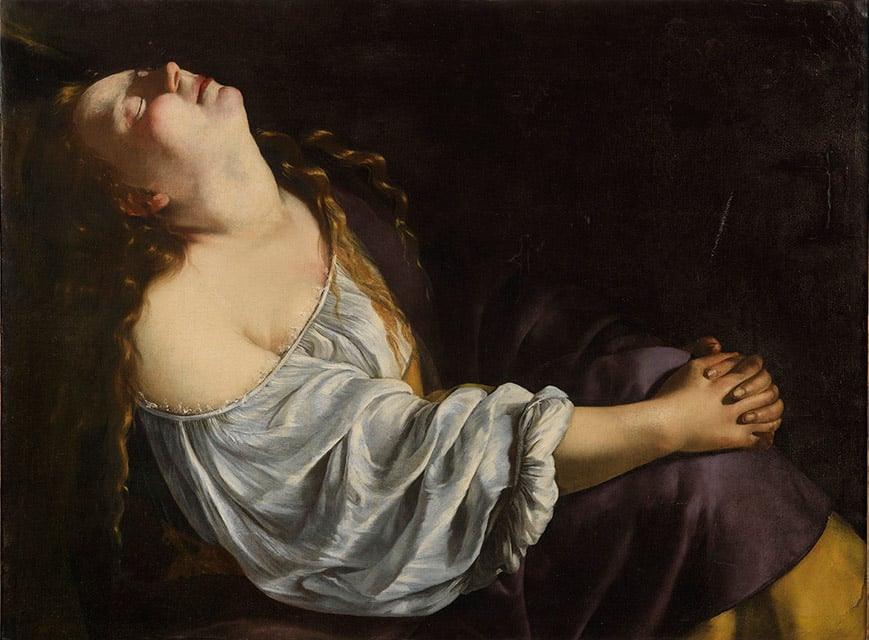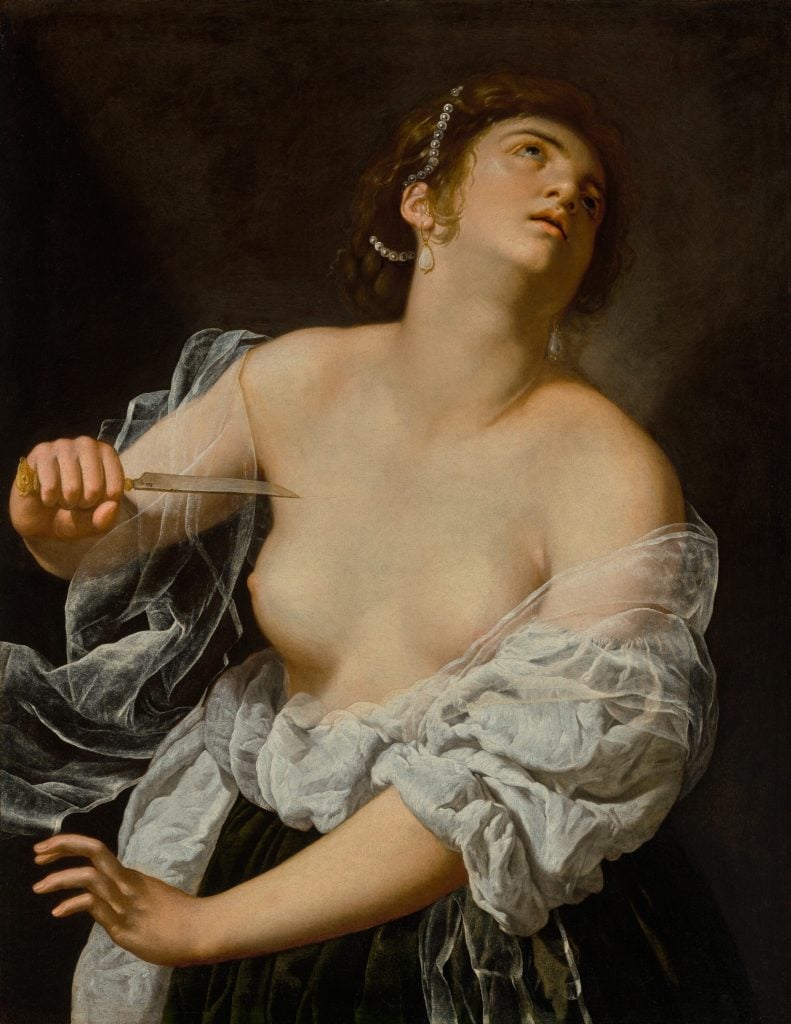Museums & Institutions
Long-Lost Artemisia Gentileschi Masterpiece Goes on View After Centuries of Obscurity
The painting resurfaced at auction in 2001 as a work by the artist's studio, and was recently identified as an original.

The painting resurfaced at auction in 2001 as a work by the artist's studio, and was recently identified as an original.

Sarah Cascone

A long-lost Artemesia Gentileschi (1593–ca. 1656) painting is joining the collection of the Kimbell Art Museum in Fort Worth, Texas. The work, titled Penitent Mary Magdalene (ca. 1625–26), went on view Friday, the first time the Baroque masterpiece has been seen publicly since its creation in the 17th century.
“The Kimbell has long wished to acquire a work by Artemisia Gentileschi but until now never found the right painting for its collection by this major figure of Italian Baroque art,” museum director Eric Lee said in a statement.
Gentileschi is a remarkable figure in art history, a follower of Caravaggio who first learned her craft at the hands of her father, the Mannerist painter Orazio Gentileschi. Her next teacher, Agostino Tassi, raped her when she was just 17 years old. When Gentileschi took him to court, she had to survive torture to prove the truthfulness of her testimony.
Against the odds, Gentileschi went on to achieve remarkable success in her field, especially for a woman artist of the era. Her noble patrons across Europe included Cosimo II de’ Medici, Grand Duke of Tuscany; and King Charles I of England.

Artemisia Gentileschi, Judith and Her Maidservant with the Head of Holofernes (ca. 1623–25). Collection of the Detroit Institute of Arts,
Fernando Enríquez Afán de Ribera, the third Duke of Alcalá and Viceroy of Naples, likely commissioned Penitent Mary Magdalene during his time as the Spanish ambassador in Rome. Gentileschi completed the work not long after one of her best-known paintings, Judith and Her Maidservant with the Head of Holofernes (ca. 1623–25), now in the collection of the Detroit Institute of Arts.
Though the duke kept Penitent Mary Magdalene at the Casa de Pilatos, his home in Seville, the canvas became famous and was copied by numerous other artists. The Seville Cathedral and the Museo Soumaya in Mexico City have notable copies.
Mary Magdalene is a recurring subject in Gentileschi’s work, which often focuses on female figures and is considered to be proto-feminist. Here, she is seen in a moment of contrition, closing her eyes as she renounces her sinful ways to turn to Christ.
The painting’s history is something of a mystery. The three-and-a-half by three foot work was passed down to the duke’s heirs, but eventually disappeared from the public record.
Then it surfaced at a Paris auction, at Tajan, in 2001. Though the house offered it as a painting by the artist’s studio, bidders clearly suspected that it might be an autograph work: It sold for FF 1.5 million ($206,441) on a high estimate of just FF 80,000 ($11,010), according to the Artnet Price Database. That’s an increase of 1,875 percent.

Artemesia Gentileschi, Penitent Mary Magdalene (ca. 1625–26), at the time of its 2001 sale, before restoration and removing of overpainting.
The painting was quite dirty, and at some point an artist had done some rather clumsy overpainting to prudishly cover Mary’s upper breast and armpit. Luckily, the additions were easy to remove during the work’s conservation.
The Kimbell believes that otherwise, the painting has had very little work done to it over the centuries. The canvas is still mounted on a rare surviving 18th-century strainer, an auxiliary support that is affixed at the painting’s corners, typically with nails, screws, or glue. Because a strainer cannot be expanded, most have been replaced over the years with stretchers as a painting becomes slack and sags in the frame.
The painting’s reattribution to Gentileschi was first announced in Apollo Magazine in 2021. After cleaning the canvas, the convincing evidence of her authorship included “subtle interaction of light and shadow in the treatment of the Magdalene’s neck,” and “the treatment of lace, which bends and curves under at irregular intervals, and especially in the portrayal of drapery with its neatly constructed and deliberately variegated shadows and highlights,” wrote art historian Jesse Locker.
Another clue are the two visible pentimenti, or revisions to the composition made by the original artist, on the contour of the neck and on the right arm, which the artist widened. Such changes are unlikely to have been made by a copyist.

Penitent Mary Magdalene after Artemesia Gentileschi. Collection of the Seville Cathedral.
The copies themselves also lack clarity in some of the details that are crystal clear in the Kimbell version. The tassel on the curtain behind the figure—similar to the drapery in Judith and Her Maidservant—transforms into a out-of-place decorative wooden element in the Seville copy, while the pewter ointment jar and mirror on the table next to her disappear into the darkness.
“Although the composition is well known through copies in Spain and Mexico, nothing compares with seeing the newly rediscovered, emotive original in person, with its bold design, delicate brushwork, and subtle variations of light and shadow,” Lee said.
The New York dealer Adam Williams Fine Art purchased Penitent Mary Magdalene on behalf of the museum from the private American collector who bought it at the 2001 sale. The institution is not naming the price.
Though famous during her lifetime, Gentileschi fell into obscurity in the centuries following her death. Feminist scholars began rediscovering her work in the 1970s, and there has been renewed interest—including surging sales and a forthcoming TV show—since the rise of the #MeToo movement.

Artemisia Gentileschi, Mary Magdalene in Ecstasy. Courtesy of Sotheby’s.
In 2014, Gentileschi set what was then a record with the £602,500 ($945,988) sale of Bathsheba at Her Bath at Sotheby’s London. The artist’s first million-dollar auction result came that same year, with the €865,000 ($1.18 million) sale of Mary Magdalene In Ecstasy at Sotheby’s Paris.
In the last decade, eight works by the artist have sold for over $2 million at auction, including most recently, Allegory of Sculpture. That work fetched $1.86 million ($2.36 million) at Christie’s London in July 2023. The only work to come to market thus far in 2024 is Saint John the Baptist in the Wilderness, which sold for $982,800 at Christie’s New York in January.
Gentileschi’s current record is €4.8 million ($5.28 million), set at Paris’s Artcurial in 2019 auction house for the painting Lucretia. The Getty Museum in Los Angeles later snagged the work for its collection.

Artemesia Gentileschi, Lucretia (ca. 1627). Collection of the J. Paul Getty Museum, Los Angeles.
Other museums have made high-profile acquisitions of Gentileschi’s work in the last decade.
The Wadsworth Atheneum Museum of Art in Hartford, Connecticut acquired Self-Portrait as a Lute Player (ca. 1616–18) in 2014. In 2018, London’s National Gallery paid £3.6 million ($4.7 million) for Self Portrait as Saint Catherine of Alexandria, which became the star of the museum’s groundbreaking 2020 Artemisia solo show—the artist’s first.
The Kimbell put Penitent Mary Magdalene on view alongside its existing holdings in late 16th- and early 17th-century Italian art such as Caravaggio’s Cardsharps (ca. 1595) and Guercino’s Christ and the Woman of Samaria (ca. 1619–20).